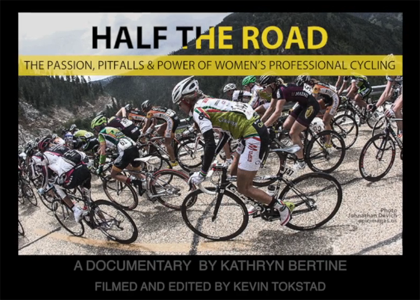It’s started the season of marathons, here are some tips to deal with this race in the best way.
Because of the physical effort and the length of the race, running a marathon is undoubtedly one of the biggest challenges that a person may face in sport. In addition to undertake a grueling race from the physical point of view, the runners have to deal with the need to manage the thoughts that flow in the mind during the long journey and which may affect the muscle aches felt and the concerns about the risk of not get to the end and do not achieve their goals. Since the marathon requires specific mental skills, sports psychologists have devised a series of mental training techniques that can help athletes of various skill levels to make the experience more rewarding and overcome their limitations. From these techniques are drawn tips that every runner can apply to successfully in training and competitions.
Maintain high levels of motivation and commitment to the long training periods can be a very difficult task. This is why it’s useful to structure a workout plan with a certified coach. If it’s not possible the runner books and talking with those who have more experience to establish personal goals, realistic and specific, as to run a certain number of miles a week or maintain a steady pace. It’s important that these goals are written in detail and some psychologists recommend placing them into slogans or psych-up sentences that are always visible at home so as to keep constant attention on them. Once defined, the goals have to be carried out with perseverance, because they help the athletes to increase the confidence and to establish more ambitious goals. However, it’s counterproductive to set goals too challenging or have too many, while it’s useful to maintain an calm attitude, waiting for the moment of the first success. During the training sessions, the runners can prepare temselves mentally, through routines to be included in the warm-up, making simulation exercises of the race, and developing a plan for mentallly dealing with the marathon. Simulate the race during some phases of training also means exercising to stay focused when the fatigue and muscle will be perceived. For this reason, the sports psychologists have studied the runners’ cognitive strategies distinguishing associative by dissociative strategies. In the first condition the athletes focus on the sensations coming from their body and the runners are aware of the physical factors critical to that kind of performance. In the strategy of dissociation, however, the athletes’ thoughts are focused on anything, except on bodily sensations. Some research has shown a trend of more skilled runners to use an associative strategy, while a preference for dissociative strategy by mid-level runners. Other studies have emphasized the opportunity to use a more flexible during the marathon, and in particular to use that associative in the beginning and final phases of the race and the dissociative in the middle phase. Another technique suggested by sports psychologists is the voluntary use of mental images in which the athletes try to recreate the scenario of the race. They imagine to successfully address some stages of the path and overcome obstacles and difficulties encountered in the path up (for such a climb, a moment of particular difficulty or adverse weather conditions) to the finish line. One of the most useful psychological techniques to be introduced in their training is the use of positive self-talk, consisting in the repetition of mentally positive keywords that can help to stay focused on the task, avoiding instead of dwelling on dysfunctional thoughts like “No, I’ll never finish”,” I feel bad “,”I’m slow “,” My legs are so heavy.” The athletes have to choose phrases expressed positively, inducing confidence about their own ability (“I can do it” – “I’ll make it” – “Still one kilometer”) or single words that can represent somthing of positive (“Fluid ” – “Easy” – ” Go! ” – ” Finish”). It’s important that the runners’ practice this technique during the dworkout , chosing the words and phrases more useful for them.
The day of the competition to pay attention to a few simple rules it will reduce the amount of mental energy nerve valuable to better address the competitive engagement. For example, to prepare all the necessary material the night before, identify and prepare the remedies for the problems that might occur, get to the departure extensively on time, arrange in advance the return home after the race and, above all, think to live an enjoyable day.
It’s also useful to know the place and the event track, taking advantage of the material that comes before the race and imagining the path even if you do not know well.
The more experienced runners are able to recognize the feeling of “hit a wall” that they feel during the toughest moment of the race as a mental component and therefore they consider to have the power to break down this barrier. The important thing is to recognize the body signals of fatigue without trying to avoid them, accepting them and interpreting them as indicators of imminent crisis or inability to move on and do well. During these moments is easy to feel a state of panic, which further it will increase the feeling of fatigue and you face alive in the athletes’ minds the word “Stop!”. In these moments the self-talk experienced in training will be very useful replacing the dysfunctional thoughts. The athletes should focus on their stride, breath, light feet on the ground. Only after these check-in it can be useful to use a dissociative strategy leading the athletes to focus on the feeling they will prove after the finish, to think of the award they will receive or even content that have nothing to do with the marathon and which have the function to distract from the fatigue.
Even during the race, as in training, it’s important to divide the effort of placing sub-goals which, once achieved, will push to get to the end. For example, it’s useful to focus from time to time over the next five kilometers or the next half hour of the race, because mentally deal with the 42 km can be perceived as something difficult to achieve.







